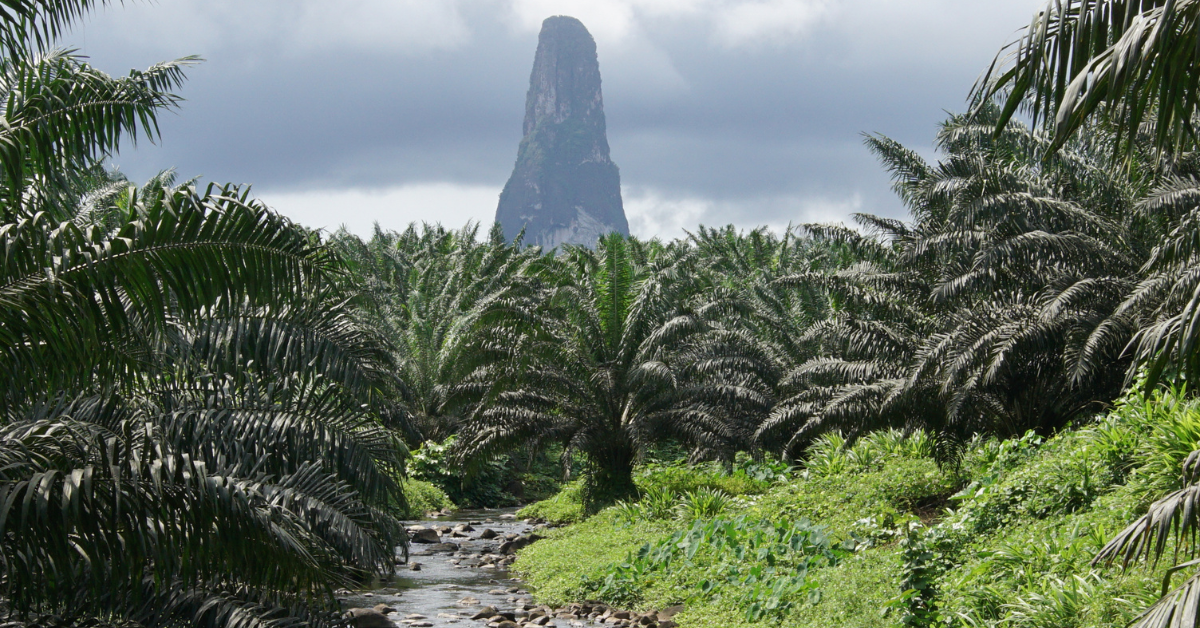São Tomé and Príncipe is a small island nation on the equator in the Gulf of Guinea, Africa.
Its Kanji representation, “聖多美和普林西比,” is mainly used in Chinese-speaking regions, while Japanese people generally know it only by its Katakana name.
This article explores the origin of this unique Kanji, its linguistic meaning, and how Japanese people perceive this hidden tropical nation.
Basic Information about São Tomé and Príncipe
São Tomé and Príncipe is the second smallest country in Africa. Portuguese is the official language, and the nation is well known for its cacao production. Since gaining independence, it has maintained peace and stability while developing an economy centered on agriculture and tourism.
| Item | Details |
|---|---|
| Official Name | Democratic Republic of São Tomé and Príncipe |
| Capital | São Tomé |
| Official Language | Portuguese |
| Area | Approximately 1,000 square kilometers |
| Population | About 220,000 |
| Currency | Dobra |
| Main Industries | Cacao, tourism, fishing |
| Climate | Tropical (average temperature around 27°C) |
The Meaning and Origin of the Kanji “聖多美和普林西比”
The phrase “聖多美和普林西比” is a Chinese transliteration of the country’s name.
“聖多美 (São Tomé)” translates to Saint Thomas, while “普林西比 (Príncipe)” means Prince in Portuguese.
| Language | Representation | Pronunciation | Notes |
|---|---|---|---|
| Japanese | サントメ・プリンシペ | Santome Purinshipe | Katakana notation is standard |
| Chinese | 聖多美和普林西比 | Shèng Duō Měi Hé Pǔ Lín Xī Bǐ | Transliteration using Chinese characters |
| English / Portuguese | São Tomé and Príncipe | Sao Tome e Principe | Original Portuguese form |
In Japanese, foreign place names are usually written in Katakana to preserve pronunciation accuracy.
This practice is similar to how “Helsinki” is written as “ヘルシンキ” in Japanese, even though in Chinese it appears as “赫爾辛基.”
How Japanese People Perceive São Tomé and Príncipe
For most Japanese people, São Tomé and Príncipe is an unknown and distant country.
When they hear the name, they may imagine “a hot climate” or “lush nature,” but in reality, the country is peaceful, safe, and has a mild tropical climate.
| Common Impression | Reality |
|---|---|
| Extremely hot and uncomfortable | Despite being on the equator, sea breezes make it pleasant year-round |
| Poor and undeveloped | Politically stable with relatively high education levels |
| Far and isolated | Maintains diplomatic relations with Japan and engages in international cooperation |
The country’s friendly people and beautiful scenery leave visitors with the impression of a true “African paradise.”
Culture and Daily Life
São Tomé and Príncipe’s culture is a fusion of African traditions and Portuguese influence. Its music, dance, and cuisine are full of rhythm and vitality, reflecting both continents’ heritage.
| Category | Characteristics |
|---|---|
| Music and Dance | Unique genres like Sokopé, blending African rhythms and Portuguese folk styles |
| Cuisine | Dishes based on cacao, fish, bananas, and tropical fruits |
| Language | Portuguese predominates; Creole languages are also spoken |
| Religion | Mainly Catholic |
| National Character | Friendly, relaxed, and hospitable toward visitors |
São Tomé and Príncipe as a Travel Destination
The country is often called “the most peaceful island nation in Africa.”
With pristine nature, clear blue seas, and dense tropical forests, it is gaining popularity among eco-tourism enthusiasts and travelers seeking tranquility.
| Travel Info | Details |
|---|---|
| Main Attractions | Ôbo National Park, Bom Bom Island, Cacao plantations |
| Best Season to Visit | Dry season (June–September) |
| Popular Activities | Diving, hiking, nature exploration |
| Access from Japan | Around 24 hours via Europe (Portugal) |
| Souvenirs | Cacao products, coffee, handmade crafts |
Many accommodations are eco-lodges and small resorts, emphasizing sustainability and harmony with nature.
Conclusion
The Kanji “聖多美和普林西比” is a Chinese transliteration of São Tomé and Príncipe, while in Japanese, the Katakana form is the natural and standard representation.
Understanding such differences can help foster greater appreciation for linguistic and cultural diversity.
Located on the equator, blessed with nature, calm seas, and warm-hearted people, São Tomé and Príncipe remains a hidden gem of Africa.
The more you learn about it, the more fascinating this small paradise becomes — a place that reminds us how rich and varied the world truly is.






